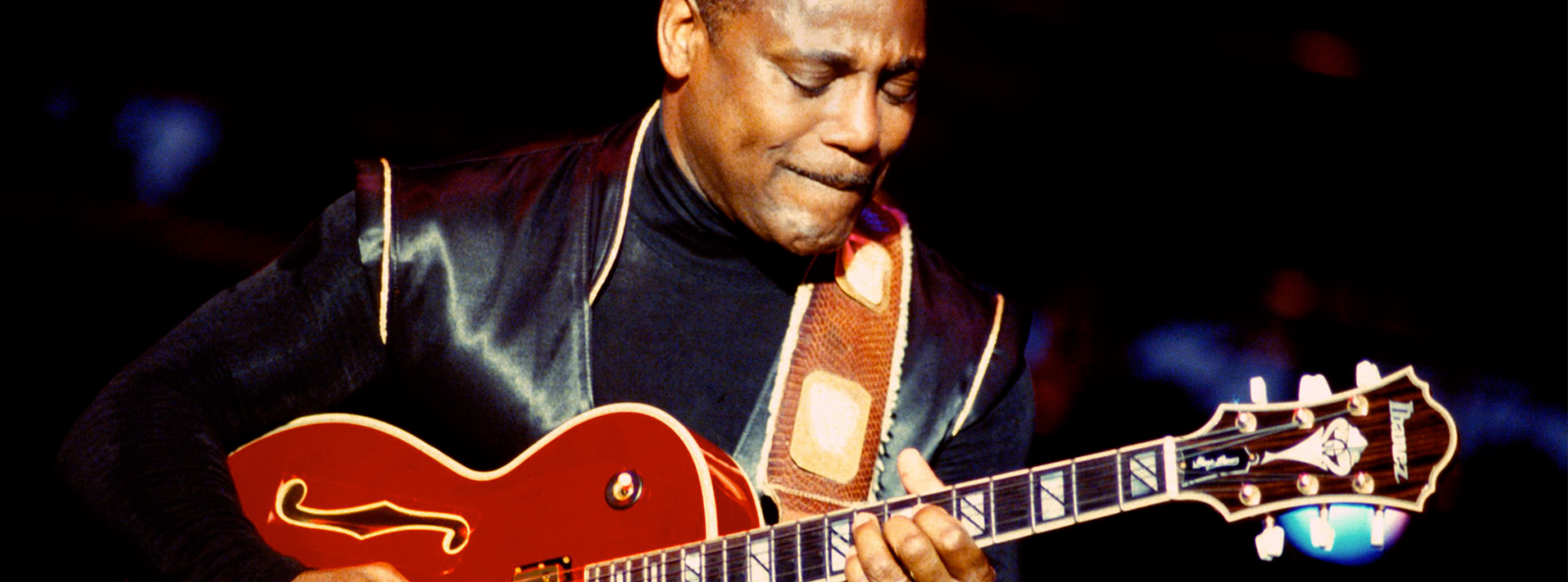"Let There Be Rock" by AC/DC - A guitarist's perspective
"Let There Be Rock" is the fourth studio album by the Australian hard rock band AC/DC, released in March 1977. It was the last album to feature bassist Mark Evans before being replaced by Cliff Williams. The album showcases the powerful, high-energy guitar work of Angus Young, the lead guitarist, and his brother, rhythm guitarist Malcolm Young. In this article, we'll explore the guitar techniques, scales, and song-by-song analysis that made "Let There Be Rock" an iconic album for guitarists.
In this course, LickLibrary veteran, Danny Gill walks you through the many highlights of each song from the rock giants one phrase at a time, including Angus Young’s legendary guitar riffs and lead lines from the tracks; “Dog Eat Dog” and “Whole Lotta Rosie”, to the rowdy title track “Let There Be Rock.”
Guitar Scales
"Let There Be Rock" primarily features the use of the pentatonic minor scale and the blues scale. These scales are popular among rock and blues guitarists due to their simple structure and versatile sound.
Pentatonic Minor Scale
The pentatonic minor scale consists of five notes, making it a more straightforward scale for rock and blues guitarists. The notes in the A pentatonic minor scale are A, C, D, E, and G.
Blues Scale
The blues scale is a six-note scale derived from the pentatonic minor scale by adding a single chromatic note, known as the "blue note." In the A blues scale, the notes are A, C, D, D♯/E♭, E, and G.
Song-by-Song Analysis
1. "Go Down"
"Go Down" kicks off the album with a driving rhythm and an infectious riff. The song is played in the key of A and features the A pentatonic minor scale. Angus Young's solo in this song showcases his ability to incorporate double-stop bends and unison bends into his playing.
2. "Dog Eat Dog"
This track is built around a hard-hitting, syncopated riff in the key of E. It utilizes the E pentatonic minor scale and E blues scale, with Angus employing techniques such as alternate picking and slides throughout the song.
3. "Let There Be Rock"
The title track is a high-energy anthem in the key of A. The main riff is based on the A pentatonic minor scale, and the song features a driving, galloping rhythm. Angus's solo in this song showcases his masterful use of vibrato, string bending, and hammer-ons.
4. "Bad Boy Boogie"
"Bad Boy Boogie" is a classic blues-rock song in the key of A, utilizing the A pentatonic minor and blues scales. The main riff is a prime example of AC/DC's signature open string riffs and power chords. Angus's solo in this track highlights his ability to incorporate trills and legato techniques.
5. "Problem Child"
"Problem Child" is another high-energy track in the key of B. The song features a catchy, syncopated main riff and uses the B pentatonic minor scale. Angus's solo in this song showcases his dexterity with techniques such as pull-offs, double-stops, and pinched harmonics.
6. "Overdose"
This track is a mid-tempo rocker in the key of D, utilizing the D pentatonic minor scale. The song's main riff features a heavy use of palm muting and barre chords. Angus's solo in "Overdose" demonstrates his skillful use of pre-bends.
7. "Hell Ain't a Bad Place to Be"
This song is in the key of G and features a driving, hard-rock riff that utilizes the G pentatonic minor scale. The track showcases Angus's ability to create memorable solos with techniques such as tremolo picking and bluesy bends.
8. "Whole Lotta Rosie"
"Whole Lotta Rosie" is an iconic AC/DC track that features a powerful riff in the key of A, using the A pentatonic minor scale. The song's energetic rhythm is a perfect example of AC/DC's galloping rhythms. Angus's solo showcases his incredible skill with string bending, vibrato, slides, and hammer-ons.
Guitar Solo Analysis
Throughout the album, Angus Young's solos demonstrate his remarkable ability to blend melody and technical prowess. He frequently employs techniques such as string bending, vibrato, slides, and hammer-ons, making his solos both expressive and dynamic. Angus's solos often follow a blues-based structure, with occasional forays into chromaticism and other advanced techniques.
Angus Young: The Lead Guitarist
Angus Young, the lead guitarist of AC/DC, is known for his energetic stage presence, schoolboy outfit, and signature Gibson SG guitar. Born in Glasgow, Scotland, Angus and his family moved to Sydney, Australia, when he was a child. He co-founded AC/DC with his brother Malcolm Young in 1973. Angus's playing is heavily influenced by blues and early rock 'n' roll, with a particular admiration for guitarists like Chuck Berry and Jimi Hendrix.
Throughout "Let There Be Rock," Angus Young's guitar work is characterised by powerful, catchy riffs and memorable solos that showcase his technical skill and bluesy sensibility. His unique style and stage presence have helped define the AC/DC sound and made him an influential figure in the world of rock guitar.
In conclusion, "Let There Be Rock" by AC/DC is a seminal album in the world of rock music, showcasing the band's signature high-energy sound and the incredible guitar work of Angus Young. With its memorable riffs, powerful solos, and engaging songwriting, the album has inspired generations of guitarists and cemented AC/DC's place as one of the most influential rock bands of all time.
For guitarists, "Let There Be Rock" offers a treasure trove of techniques, scales, and ideas that can be used to enhance their playing and expand their musical vocabulary. By studying and incorporating Angus Young's guitar work, players can develop their own unique style while paying homage to one of the all-time greats.
So, pick up your guitar, plug in, and dive into the world of AC/DC's "Let There Be Rock." Whether you're a seasoned professional or just starting, there's something in this album for every guitarist to learn, appreciate, and enjoy. Happy playing!
Guitar Techniques Used
"Let There Be Rock" features a variety of guitar techniques that have become synonymous with AC/DC's sound. Below is a list of the techniques used in this album:
- Alternate Picking
- Barre Chords
- Bluesy Bends
- Double-Stop Bends
- Double Stops
- Hammer-Ons
- Legato
- Open-String Riffs
- Palm Muting
- Pinched Harmonics
- Power Chords
- Pre-Bends
- Pull-Offs
- Slides
- String Bending
- Syncopated Rhythms
- Trills
- Tremolo Picking
- Unison Bends
- Vibrato

About The Tutor
Tutor Profile
Danny Gill
Danny Gill is, without a doubt, the most loved tutor by our community. With an incredible array of DVDs and web lessons for LickLibrary covering a wide variety of topics all of which he covers with incredible detail, it's no wonder he carries as much respect as he does. As...



